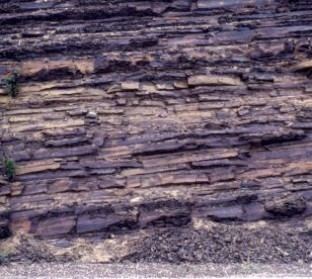 | ||
All for home vs ecca group
The Ecca Group is a group of sedimentary geological formations found in southern Africa. A component of the Karoo Supergroup, it consists mainly of shales and sandstones, laid down in the sandy shorelines of swamplands during the Permian Period.
Contents
- All for home vs ecca group
- Siupakabra vs ecca group
- Description
- Karoo Supergroup stratigraphic sequence
- Ecca Group stratigraphy in the Eastern Cape Province
- References
Siupakabra vs ecca group
Description
The type area for the Ecca Group is in the Karoo Basin of South Africa and Lesotho. In the southwestern Karoo Basin, the Ecca Group has a total thickness of approximately 1300 m. There is no single location where the entire vertical section of the Ecca Group is exposed. At Skoorsteenberg in the southwestern basin there is a 900-m exposure of the unit.
The Ecca Group sandstones and shales originated as clastic sediment deposited in a large and shallow inland sea. Swamps and forest vegetation developed at many places and times during its deposition, resulting in widespread coal deposits. Almost all of South Africa's coal resources and one-third of the coal resources in the Southern Hemisphere are in rocks of the Ecca Group.
Karoo Supergroup stratigraphic sequence
In the Eastern Cape Province the Karoo Basin fill commenced with the deposition of the Dwyka Group, followed by the Ecca Group, the Beaufort Group, the Molteno, Elliot, and Clarens Formations and the igneous Drakensberg Group. The basin followed the typical evolution of foreland basins, with the Ecca Group representing the ‘flysch’ component and the Beaufort Group, the overlying Molteno and Elliot Formations representing the ‘molasse’-fluvial type sediments.
Ecca Group stratigraphy in the Eastern Cape Province
The Ecca Group is recognized throughout southern Africa. Stratigraphic units in this group in the Eastern Cape Province include, in order of deposition:
The Pietermaritzburg Formation and the younger Vryheid Formation are also named deposits within the group.
